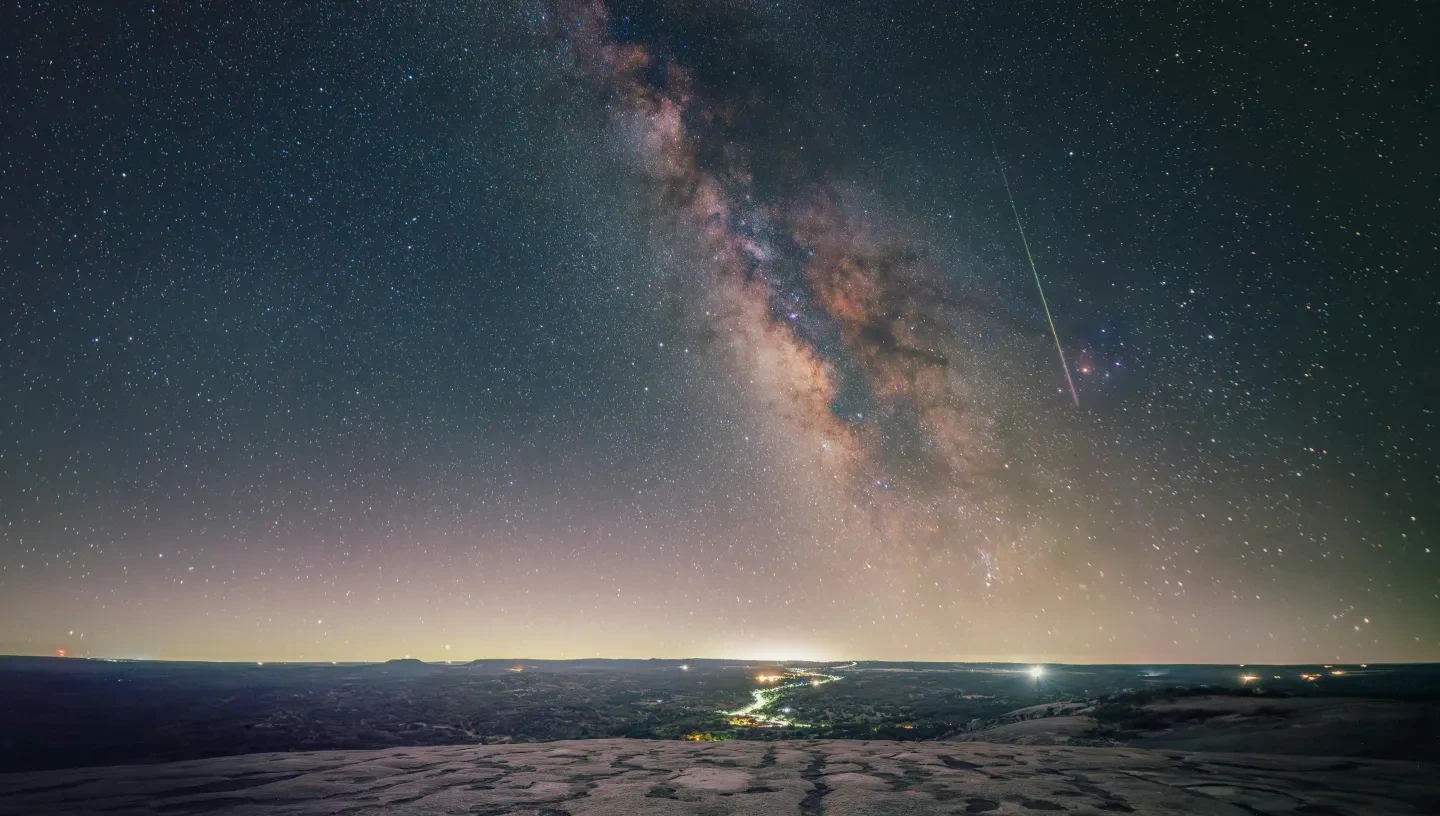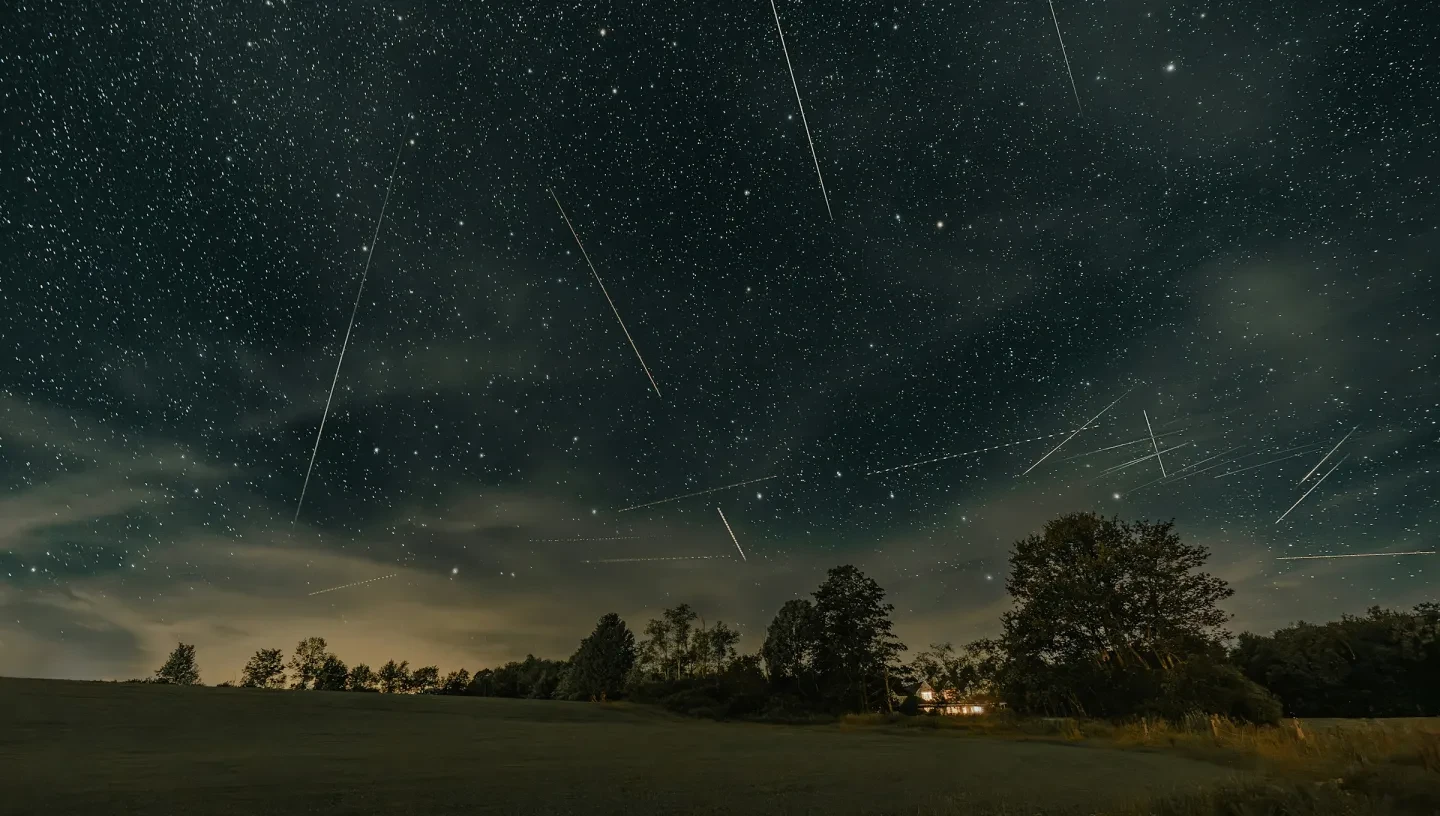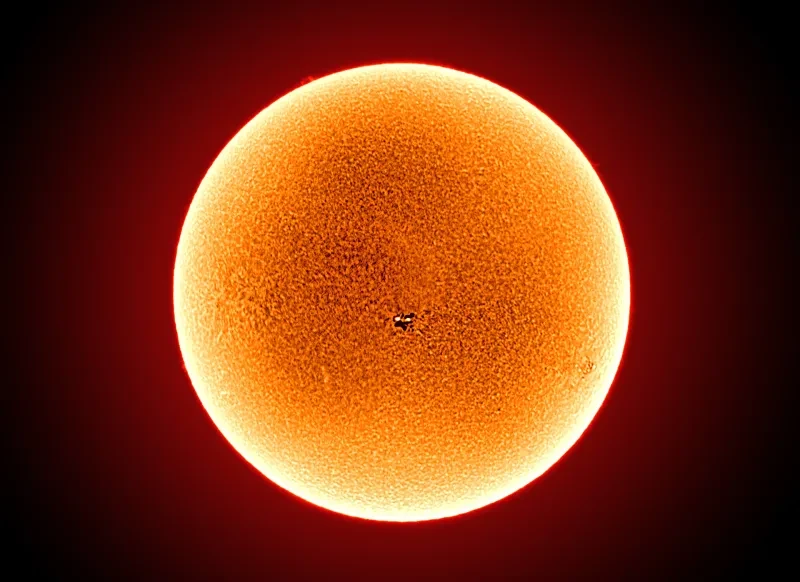
In 2026, the Lyrid meteor shower will be active between 16-25 April and will peak on the night of 22 April.
What is the Lyrid meteor shower?
The Lyrid meteor shower is a burst of meteor activity occurring around mid to late April.
Meteors are small chunks of debris left in the wake of certain celestial objects, like asteroids or comets. When the Earth passes through this trail of material, it scoops up a number of these pieces, which fall into the atmosphere.
These objects are moving extremely fast (about 50km/s) compared to the relatively still atmosphere. In fact, they fall so fast that the air in front of them can’t get out of the way fast enough, and instead gets rapidly squashed and heated up. This causes the surface of the meteor to reach temperatures as high 1600°C, glowing brightly, which is visible as a short-lived streak of light in the sky.
Most meteors are so small that they burn up well before they hit the ground. However a handful will get through, with the remnant left on the ground called a meteorite.
The Lyrid meteor shower is associated with long-period Comet C/1861 G1 Thatcher. It is the oldest recorded meteor shower still visible today, and was first recorded in 687 BCE.
While the Lyrid meteors will be visible all across the sky, following their path backwards they will appear to originate from the constellation of Lyra, the lyre, which contains the star Vega.
In reality the meteors have nothing to do with this distant group of stars. The direction they appear to come from is dictated by the motion of the Earth and the debris itself.
All of the meteors are coming in approximately parallel to one another, like lanes of traffic on a straight motorway. Our perspective makes them appear to travel sideways across the sky. Just as a person standing on the central reservation of the motorway will have cars pass on either side of them, the meteors will appear to diverge from the so-called radiant point in Lyra and streak across the sky in all directions.
Very rarely a meteor will be particularly bright, with those appearing brighter than any of the planets (Venus being typically the brightest) classed as a fireball.
When is the Lyrid meteor shower?
| SHOWER NAME | DATE OF MAXIMUM in 2026 | NORMAL LIMITS | RATE/HOUR | DESCRIPTION |
|---|---|---|---|---|
| Lyrids | 22 April | 16-25 April | 18 | Bright fast meteors, some with trains. Associated with Comet Thatcher |
Find out more key meteor shower dates throughout the year here.
Where can I see the Lyrid meteor shower?
As with all meteor showers, the best way to see the Lyrids is to find a dark site with an unobstructed view of the sky. The number of meteors you actually see will depend on all sorts of things, from the time of night to the level of background light. A bright sky will drown out the fainter meteors, making them much more difficult to see.
The best time to see the shower is generally in the early morning of the peak day. Wait until after midnight when the radiant point, in the constellation of Lyra, will have risen in the East. The later in the morning you wait, the higher the radiant will rise and the fewer meteors will be hidden below the horizon. But the closer you get to sunrise, the brighter the sky is going to become, so plan accordingly!
In 2026 the Lyrid meteor shower reaches maximum on April 22, two days before the First Quarter Moon, meaning the Moon won't cause too much light pollution.
Then simply fill your view with the sky and wait. Lying on the ground is a great way to see as much as possible - blanket optional but highly recommended. Reclining deckchairs make an even more comfortable way to view the sky. Also, even though summer is rapidly approaching, remember to wrap up warm!
There is another stronger shower, the Eta Aquariids, that overlaps with the Lyrids. The Eta Aquariids begin on April 19, with their maximum on May 5.

Meteor shower guide
Header image by Justin Wolff on Unsplash




